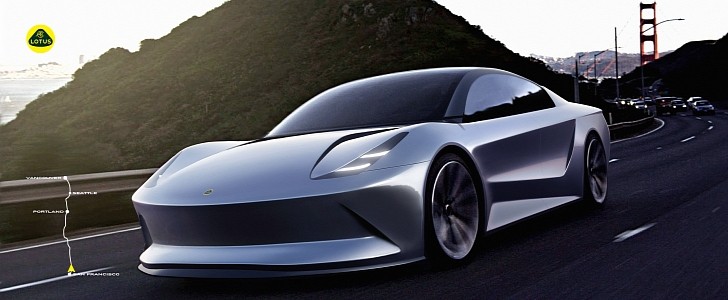Founded in 1948 by Colin Chapman as Lotus Engineering Ltd., the British company made a name for itself in the Great Circus from 1958 to 1994 as Team Lotus. But as it’s often the case with motorized sports, the prize money in F1 wasn’t nearly enough to pay the bills and employees.
The financial strain became all the more apparent by 1980, and when Colin Chapman died, he and Lotus were linked with the DeLorean scandal over the use of government subsidies for the production of the legendary DMC.
Come 1986, the group was purchased by General Motors. Even with the backing of Detroit Motor City’s heavyweight, the Hethel-based company was forced to compromise with various projects that would make Chapman roll in his grave. The Carlton is one of those cars, but compromises rarely get better than the sedan that could outrun the BMW M5 from the early '90s.
Once the favorite target of joyriders and thieves, the Carlton was on such a different level despite its humble origins that the Association of Chief Police Officers and Daily Mail tried to ban it altogether. Even the British Parliament was critical of the four-door sedan’s advertising, which goes to show that Lotus can make a serious performance car even on a tight budget.
Lotus produced 950 units of the go-faster Carlton and Opel-branded Omega from 1990 to 1992, and the design study before your eyes can be considered an indirect successor of sorts. Penned by ArtCenter College of Design automotive design student Forest Yang, the Evisa takes inspiration from the Emira, the automaker’s final internal combustion-engined production car.
Envisioned with 2+2 seating, 245/30 by 20-inch rubber shoes, a wheelbase of 2,850 millimeters (112.2 inches), and a length of 4,900 millimeters (192.9 inches), the concept has a similar footprint to the Porsche Taycan. But as opposed to the luxurious EV from Zuffenhausen, the Evisa relies on solid-state batteries. Toyota is currently in the leading position in this regard, and the Japanese automaker intends to launch a solid-state EV by 2025.
Come 1986, the group was purchased by General Motors. Even with the backing of Detroit Motor City’s heavyweight, the Hethel-based company was forced to compromise with various projects that would make Chapman roll in his grave. The Carlton is one of those cars, but compromises rarely get better than the sedan that could outrun the BMW M5 from the early '90s.
Once the favorite target of joyriders and thieves, the Carlton was on such a different level despite its humble origins that the Association of Chief Police Officers and Daily Mail tried to ban it altogether. Even the British Parliament was critical of the four-door sedan’s advertising, which goes to show that Lotus can make a serious performance car even on a tight budget.
Lotus produced 950 units of the go-faster Carlton and Opel-branded Omega from 1990 to 1992, and the design study before your eyes can be considered an indirect successor of sorts. Penned by ArtCenter College of Design automotive design student Forest Yang, the Evisa takes inspiration from the Emira, the automaker’s final internal combustion-engined production car.
Envisioned with 2+2 seating, 245/30 by 20-inch rubber shoes, a wheelbase of 2,850 millimeters (112.2 inches), and a length of 4,900 millimeters (192.9 inches), the concept has a similar footprint to the Porsche Taycan. But as opposed to the luxurious EV from Zuffenhausen, the Evisa relies on solid-state batteries. Toyota is currently in the leading position in this regard, and the Japanese automaker intends to launch a solid-state EV by 2025.















